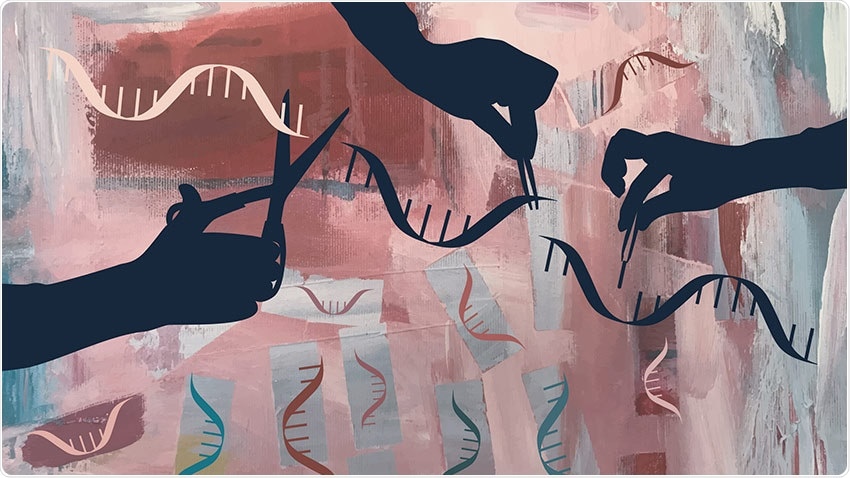Researchers discovered the potential of CRISPR, a tool used by bacteria to defend themselves against viral intruders, nearly a decade ago. This technique is currently a standard research tool for genome editing. CRISPR-Cas9 is a prominent CRISPR technology that allows researchers to discover and then cut out or swap targeted DNA inside a cell.

Image Credit: Getty Images.
However, the ability of cas9 tools to engineer large-scale, gene-sized edits is really limited.”
Yan Zhang PhD, Assistant Professor, Department of Biological Chemistry, University of Michigan Medical School
Another editing technique, CRISPR-Cas3, comes into play here.
The Zhang lab was one of the first to propose the new technology, in 2019, which is capable of processive DNA degradation and, in turn, making large-scale genome deletions. The average human gene is in the length of 10 to 15 kilobases, which CRISPR-Cas3 can easily cut out.
Zhang also says that this technology faced some limitations in efficiency, larger gene size, and protein manufacturing.
The current study carried out by senior authors Zhang and Zhonggang Hou PhD, PhD student Renke Tan, master’s student Ryan Krueger, and their team along with collaborators explain how they discovered a hidden gem that enables the usage of novel CRISPR-Cas3 editors that can overcome the mentioned limitations. The study was published in the journal Molecular Cell.
In the new study, the scientists presented the first example of a miniature CRISPR-Cas3 editor from the bacteria Neisseria lactamica that considerably enhances editing efficiency. This method is simple to generate as ribonucleoprotein reagents and has an overall compact gene size that promotes in vivo delivery.
Earlier, while using the older version of the tool, “we were only achieving 10 percent editing in stem cells and maybe 30 to 50 percent in cancer-derived cell lines.”
Now, the researchers produced N. lactamica CRISPR-Cas and purified its Cascade RNP and Cas3 protein. They were able to achieve a 50% editing efficiency in stem cells and a remarkable 95% editing efficiency in other human cell lines.
To get the most out of this tool, researchers set out to develop an expression technique based on plasmids, which are small circular DNA molecules that allow researchers to skip the protein purification stage. The plasmids, however, did not work when they tried to produce and transport them.
Tan detected an extra protein band on the protein purification gel and discovered that it is an interior translation product called Cas11, which is required for the CRISPR-Cas3 complex to assemble and perform editing in a human cell.
This type of Cas11 protein was like a hidden gem that’s been only recently noticed by us and other researchers.”
Yan Zhang PhD, Assistant Professor, Department of Biological Chemistry, University of Michigan Medical School
Cas11 protein was produced in human cells when it was reintroduced via a different expression plasmid, allowing the CRISPR-Cas3 plasmid system to function strongly.
I think we found the version of CRISPR-Cas3 tool that we are very satisfied with.”
Yan Zhang, PhD, Assistant Professor, Department of Biological Chemistry, University of Michigan Medical School
The team has made the tool available to researchers on Addgene to explore a broad variety of scientific concerns, from deleting big disease-causing genes to researching the non-coding human genome, with the publication of this study.
“The next phase for us is to apply CRISPR-Cas3 in animal models and stem cells to create disease models or study cis-regulatory elements for pluripotency,” concludes Zhang.
Source:
Journal reference:
Tan, R., et al. (2022) Cas11 enables genome engineering in human cells with compact CRISPR-Cas3 systems. Molecular Cell. doi.org/10.1016/j.molcel.2021.12.032.